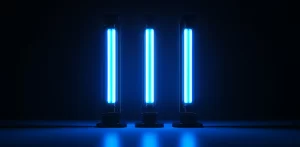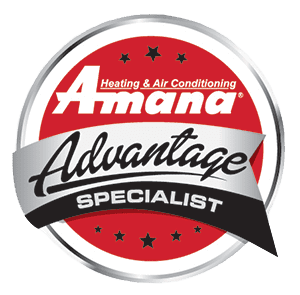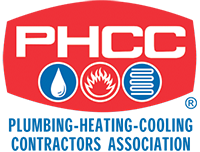
As the winter stretches on, and even the warmer southern states begin to feel the chill, the common cold and flu sweep in. We spend our time indoors in these chilly months, so indoor air quality suddenly becomes a higher priority. Homeowners and businesses alike have to compensate for the increased time spent inside, close together, in an age where health and energy efficiency are paramount concerns. One innovative solution that has gained traction is the installation of UV lights in HVAC systems. Of course, the common reaction is confusion; why add a UV light to your HVAC system? The HVAC system is no bowling alley where the black lights make your white shirt glow purple. True, these lights, initially developed for medical and industrial use, have proven to be an effective addition to residential and commercial HVAC setups, offering a range of benefits from cleaner air to extended system lifespan.
In this blog post, we will explore why installing a UV light in your HVAC system is a smart investment for better air quality, energy efficiency, and overall health.
What Is a UV Light for HVAC Systems?
Ultraviolet (UV) lights are devices that emit UV-C light, a specific spectrum of ultraviolet radiation known for its germicidal properties. These can be installed directly in the air handler, positioned near the evaporator coil to prevent mold and microbial growth. Also, they can be added to the ductwork to neutralize airborne pathogens as the air flows through the ducts. When installed properly in either of these two locations, these lights work to sterilize and disinfect air as it circulates through the system.
Key Benefits of Installing a UV Light in Your HVAC System
1. Improved Indoor Air Quality (IAQ)
Indoor air can be two to five times more polluted than outdoor air, according to the Environmental Protection Agency (EPA). Common indoor pollutants include mold, bacteria, viruses, and allergens.
UV lights effectively reduce these contaminants by killing airborne bacteria and viruses, preventing the spread of mold spores, and reducing allergens and irritants.
For families with members who suffer from allergies, asthma, or other respiratory conditions, cleaner air can dramatically improve quality of life.
2. Enhanced HVAC Efficiency
Your HVAC system works best when its components are clean and unobstructed. Over time, mold and biofilm buildup on the evaporator coil can reduce airflow and heat exchange efficiency. This forces your system to work harder, increasing energy consumption and utility bills.
UV lights help maintain HVAC efficiency by keeping evaporator coils clean and free of microbial buildup. They are energy efficient as well, as they can reduce the load on your system, which can lower energy usage by up to 25%. UV lights have also been proven to prolong the lifespan of your HVAC components, reducing the need for costly repairs or replacements.
3. Health Benefits
Airborne pathogens such as viruses and bacteria are a primary concern in homes and workplaces. UV lights have been proven to neutralize many of these pathogens, contributing to a healthier environment.
By reducing exposure to harmful microorganisms, UV lights lower the risk of illnesses such as the flu, colds, and other infections. In the winter especially, the health benefits are certainly key. UV lights provide peace of mind for families with young children, elderly individuals, or those with compromised immune systems. They can even help businesses create a safer workspace for employees and customers.
4. Odor Reduction
Mold, bacteria, and other contaminants in your HVAC system can cause unpleasant odors to circulate throughout your home or building. UV lights neutralize these odor-causing microbes, resulting in fresher, cleaner air.
5. Low Maintenance and Long-Lasting Solution
Installing a UV light is a relatively low-maintenance upgrade for your HVAC system. Once installed, the UV light requires minimal upkeep. The only thing to keep in mind is occasionally cleaning to ensure optimal performance. Your HVAC system can easily accumulate dust, so it is a good idea to keep up with manual cleaning once and a while. As for the UV light, however, just replace the bulb every 9 to 12 months, depending on usage and manufacturer recommendations.
The longevity and simplicity of this solution make it a cost-effective way to improve your HVAC system’s performance and air quality.
How UV Lights Work in HVAC Systems
The science behind UV lights is straightforward but highly effective. UV-C light disrupts the DNA and RNA of microorganisms, rendering them unable to reproduce or cause harm.
1. Disinfection of Evaporator Coils
Evaporator coils are a breeding ground for mold and bacteria due to the presence of moisture and organic matter. UV lights installed near the coils continuously disinfect them, preventing microbial growth and maintaining system efficiency.
2. Airborne Pathogen Neutralization
When placed in the ductwork, UV lights disinfect air as it flows through the system. This ensures that harmful pathogens are neutralized before they circulate in your indoor spaces.
Are UV Lights Safe?
One common concern about UV lights is their safety. When installed correctly by a professional, UV lights pose no risk to occupants. The lights are typically encased in a protective housing and are designed to operate only within the HVAC system.
It’s essential to follow manufacturer guidelines and consult with an HVAC professional to ensure proper installation and maintenance.
Who Should Install a UV Light in Their HVAC System?
While UV lights are beneficial for virtually any HVAC system, certain situations make them especially valuable:
- Homes in Humid Climates: High humidity fosters mold growth, making UV lights an excellent preventive measure.
- Allergy and Asthma Sufferers: Cleaner air means fewer allergens to trigger symptoms.
- Businesses and Healthcare Facilities: UV lights help maintain sanitary conditions, crucial for employee and customer health.
- Homes with Pets: Pet dander and odors can be significantly reduced with UV lights.
Considerations Before Installation
Before installing a UV light, it’s important to consider a few factors:
- System Compatibility
Ensure that your HVAC system can accommodate a UV light. Most systems can, but older units may require additional modifications. - Energy Consumption
UV lights consume a small amount of energy, typically around 15–20 watts, but it’s important to include this in your overall energy considerations. - Initial Investment
The cost of UV light installation varies depending on the type and number of lights required, but the long-term savings and health benefits often outweigh the initial expense. - Professional Installation
Proper installation is key to ensuring safety and effectiveness. Always hire a certified HVAC technician for the job.
Cost and Return on Investment (ROI)
The average cost of installing a UV light in your HVAC system ranges from $200 to $800, depending on the type and complexity of the setup. We recommend having an expert in HVAC systems install the UV light for your system to ensure its effectiveness and seamless integration. While this may seem like a significant investment, the long-term benefits provide a strong ROI. UV lights have numerous advantages including reduced energy bills due to improved efficiency, lower maintenance costs, and improved health and well-being, ensuring your peace of mind.
FAQs About UV Lights in HVAC Systems
- Do UV lights kill COVID-19?
Yes, UV-C light has been shown to inactivate many viruses, including coronaviruses. However, it should be part of a broader strategy to maintain a clean and healthy indoor environment.
- Can UV lights replace air filters?
No. UV lights complement air filters but do not replace them. Filters remove large particles, while UV lights neutralize microorganisms.
- How long does it take for UV lights to work?
UV lights work continuously, but noticeable improvements in air quality may take a few days to a week, depending on the level of contaminants.
Conclusion
Installing a UV light in your HVAC system is more than just an upgrade—it’s a step toward healthier living and better system performance. By improving indoor air quality, enhancing energy efficiency, and reducing microbial growth, UV lights offer a powerful solution for modern HVAC systems.
For homeowners and businesses alike, the benefits of UV lights extend far beyond cleaner air. They contribute to a healthier, more comfortable environment while saving money on energy and maintenance costs over time.
If you’re considering a UV light installation, consult with a trusted HVAC professional to determine the best setup for your system. With this simple yet effective addition, you can transform your HVAC system into a cleaner, more efficient, and more health-conscious asset for years to come.










